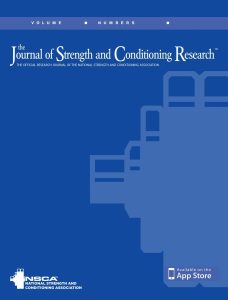Publications

The Effects of the “Sling Shot” Device on Bench Press Performance, Mechanical Properties of Muscle, and Movement Kinematics
Authors: Grzegorz Wojdala, Michal Krzysztofik
Affiliations:
Institute of Sport Sciences, The Jerzy Kukuczka Academy of Physical Education in Katowice, Katowice, Poland
Journal: Journal of Strength and Conditioning Research - April 2023, Volume 34, Issue 4, Pages 780-786 (DOI: 10.1519/jsc.0000000000004349)
-
Field & Applications:
- Sport
- Fatigue / Overtraining
- Muscle development / Performance
This study aimed to evaluate the influence of the sling shot support device at various external loads and intensities of effort, taking into account acute changes in power performance, mechanical muscle properties, and bench press kinematics.
For this purpose, 12 resistance-trained men (age: 27.1 ± 4.2 years, body mass: 90.3 ± 16.9 kg, bench press [BP] 1 repetition maximum [1RM]: 112.7 ± 23.1 kg) (resistance training experience: 6.9 ± 3.8 years) participated in the study. Each subject completed 2 experimental sessions that differed in the use of the sling shot (SS) or nonuse (CONT) of the SS and an appropriate external load. The 2 experimental sessions consisted of the 1RM test, 3 sets of 2 repetitions of BP with the load increased in each set (50-70-90% 1RM), and a fourth set of the BP efforts to muscle failure with a 70% 1RM load. Before and after each set, the changes in triceps brachii oscillation frequency and stiffness were assessed by means of myotonometry.
Results indicated a significant main effect of the SS to increase peak power (p < 0.0001, η2 = 0.733). Furthermore, a significantly higher 1RM (129 ± 26 vs. 113 ± 23 kg, p < 0.001, effect size [ES]: 0.63), number of repetitions (15 ± 3 vs. 13 ± 2, p = 0.013, ES: 0.76), and time under tension (34 ± 10 vs. 29 ± 6 seconds, p = 0.017, ES: 0.59) were found during the set to failure for SS in comparison to the CONT condition. Moreover, there was a significant main effect of time to increase oscillation frequency (p = 0.001; η2 = 0.666) and stiffness (p = 0.002; η2 = 0.613) from pre- to postset measure. In addition, the main effect of the side (p = 0.034; η2 = 0.348) was reported to show higher stiffness on the dominant than on the nondominant side in the CONT condition.
The results suggest that an independent 1RM measurement and a correspondingly higher workload are required to take full advantage of the SS device. Moreover, the SS can also be used successfully to increase training volume and the involvement of nondominant limbs during a bench press.
Keywords: resistance training, training equipment, supportive training device, myotonometry, muscle stiffness
The results of this study point to the need for a separate assessment of maximal strength levels when using the SS device in exercise and training routines. An independent 1RM measurement and a correspondingly higher workload are required to take full advantage of the SS. Otherwise, the effects may be negligible, and the assistance that results from using the equipment is only apparent, excluding mental help in overcoming sticking points. The SS can also be used with success for increased volume to stimulate muscle endurance and local hypertrophy and increase the involvement of nondominant limb during the bench press exercise. Considering modern training solutions, the Myoton seems to be a reliable and compact tool for assessing local fatigue and muscle properties during training, especially immediately before and after specific exercises or between the sets.


